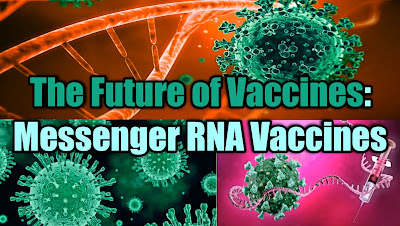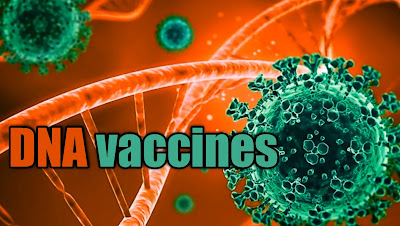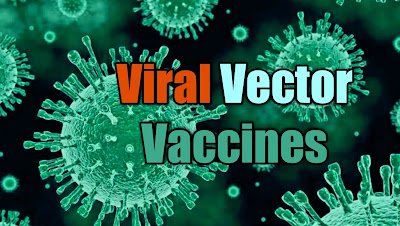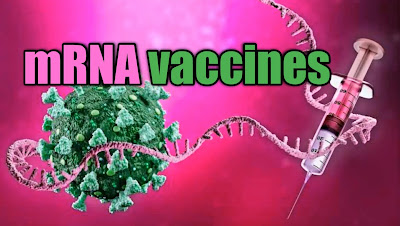With a growing world population, the need for effective yet inexpensive vaccines is becoming more critical. Although traditional vaccines have been effective in reducing the incidence of many infectious diseases, they have their limitations. For example, many conventional vaccines are not suitable for infants and children. Newer approaches to vaccine development include DNA, viral vector, and messenger RNA (mRNA) vaccines. These newer types of vaccines show promise but are still under development and require further research before they can be licensed for use in humans.
Blog List:
1. DNA vaccines
2. Viral vector vaccines
3. mRNA vaccines
4. Potential advantages of mRNA vaccines
5. Potential disadvantages of mRNA vaccines
6. Prospects for further development and licensure of mRNA vaccines
{tocify} $title={Table of Contents}
1. DNA vaccines
DNA vaccines are a new form of immunization that can be used to treat or prevent infectious diseases like HIV, hepatitis, herpes, or cancers. The vaccines are made from synthetic DNA that encodes the genetic information of the virus or cancer being targeted. These vaccines are injected into the body, where they are taken up by cells.The DNA used for these vaccines does not include any live viruses (as opposed to the large amounts of live viruses used in traditional vaccines), and so it does not cause large amounts of side effects or other complications. However, because these vaccines are synthetic, they are much less effective, needing to be given multiple times. The smaller amount of genetic material also makes them less potent. While the DNA in the small amounts used in the small quantities currently used are more powerful and can be better absorbed by the body, they are also less potent.
Who currently produce DNA vaccines? The most common form of the DNA vaccine currently being used is called a Restriction Endemic (RE) vaccine. It consists of a weakened, or fragmented, version of the virus that is targeted, along with several genes that are meant to induce a greater effect. This strain is then spread through large animals or humans by breathing in the virus or through mucous membranes. This shot is meant to last between 7–12 weeks, but it can be given multiple times. RE vaccines can only be given to people 9 months of age and older who are currently living in specific countries (or in mass cases) in Africa, Asia, the Caribbean, South America, and the Pacific Islands. This can include countries with ongoing conflicts, as well as countries in Africa, the Caribbean, Europe, and Central and East Asia. All other countries and countries not on those continents are not currently allowed to receive RE vaccines.
Why do countries need to undergo lockdowns? Consider this: Every few weeks, a new case of a disease is diagnosed. Sometimes this will happen naturally, as in the case of a traveler who has a cold.
Read More Details: What is mrna technology?
2. Viral vector vaccines
The key to developing a viral vector vaccine is to take the target antigen and put it inside the vector (a virus or bacteria) so that it delivers the antigen to the host. The host’s immune system then recognises the antigen as foreign and attacks it, generating immunity against the target disease.
Vaccines use two completely different proteins – a protein used in small amounts in the initial physical preparation, and a protein that is not needed at all in the final physical preparation. Vaccines made using this second protein – called adjuvants – can be an additional component to a vaccine lot used to propagate the vaccine, and contain other components that may help stimulate the immune system.
Vaccines used today consist of a single element – a whole-virus molecule that includes the target protein as well as many other components to stimulate the different parts of the immune system. This includes, in brief, natural components that help stimulate an immune response, as well as unnatural chemicals and proteins to mess with the target protein.
Who would be vaccinated? The rationale for a global vaccination program goes something like this: Human beings are more likely to catch diseases like smallpox, influenza, and whooping cough than wild animals or anything else. Therefore, it is more important to stop these diseases from ravaging the world than to try to prevent every case of those diseases. People who are healthy and who are not immune-compromised are vaccinated to stop the disease from ravaging the world. Those who are immune-compromised and can no longer withstand large doses of the original disease try to keep themselves alive by taking up protection from other diseases, but this side-effect prevents widespread vaccination and, instead, causes the world’s population to fall considerably.
In terms of determining who is at risk, the WHO currently categorise everyone under the age of five as “party to the disease,” or those who have direct contact with the disease or those who are close to death.
3. mRNA vaccines
mRNA vaccines are becoming increasingly popular over traditional vaccines because they provide greater efficacy and are safer than traditional vaccines. mRNA vaccines are made by extracting the messenger RNA (mRNA) from the target pathogen. mRNA has the ability to cross the blood-brain barrier, which enables it to activate the immune response in the central nervous system (CNS). mRNA vaccines naturally inhibit the replication of the human herpesvirus (HHV) and the influenza viruses as well. A number of mRNA vaccines have also been developed and licensed by different companies. Two such vaccines are currently in clinical trials to treat HHV-1 in combination with other therapy by the University of Oxford.
What caused the pandemic? Health systems around the world initially responded to the COVID-19 pandemic by implementing the Structured Clinical Information Collaborative (SCIC) Initiative. This initiative allowed them to use Structured Clinical Information (SCIC), a standardised reporting system for clinical trials, to monitor the effectiveness of individual vaccines and monitor clinical trial outcomes by utilising cloud technology. This data allowed not only local health systems to monitor the impact of vaccines on their populations, but also larger global health systems, like the WHO.
How do you know if a vaccine is effective? virology teams use the Reverse Polio Vaccine Network (Rotor) to assess the efficacy of a vaccine. The network consists of more than 190 countries that risk being infected by the COVID-19 virus and using machine learning techniques, scientists are assessing if a vaccine any given strain of the virus is more likely to cause a mild disease versus a severe disease. Based on simulations with cohorts of over 17,000 people, researchers have assessed the safety and efficacy of the oral polio vaccine (OPV). The data has shown that the vaccine could be effective in preventing cases of the COVID-19 coronavirus in over 90% of cases.
Read More Details: How To Use MRNA Technology To Improve Your Health, Diet, And Exercise
4. Potential advantages of mRNA vaccines
mRNA vaccines are a new form of gene therapy. They are similar to DNA vaccines except that they use messenger RNA (mRNA) to deliver vaccine antigens to the cells. mRNA is transcribed from DNA. It is then translated into a protein. The mRNA vaccine is injected into the patient where it is taken up by cells.Upon being incorporated into the cell membrane, the mRNA gets replicated by a cellular enzyme and other proteins, forming a cross-link and preventing another molecule from entering the cell. This enables the mRNA to enter the nucleus and be used for protein synthesis. Cellular immunity To achieve the goal of universal vaccine immunity, mRNA vaccines must be able to protect against a broad range of microorganisms. mRNA vaccines may not be able to protect against bacteria such as MRSA. (glycobiology) Therefore, cell type dependent vaccines may also be critical for universal vaccine delivery.
What are the current vaccines for Covid/SARS? Firstly, there is COVID-19 vaccine which is a live attenuated COVID-19 vaccine that is produced by Biopharma companies and licensed by WHO. This COVID-19 vaccine is a member of the Vaccine Chemistry Placebo Effectuated Phase III program as the primary efficacy endpoint is 80% among healthy adults and a minimum shedding of > 10 p.p.m. at the time of sampling. The vaccine was licensed on November 2, 2020. This vaccine is used due to low efficacy (1–19%) among healthy adults in cohorts with low coverage in high-risk settings such as healthcare and education settings; and is not recommended for non-interaction where the lowest effective efficacy coverage is 26%. Alternatively, the second COVID-19 vaccine, ST51, is another live COVID-19 vaccine licensed by WHO in April 2020 and is a vaccine produced by AstraZeneca’s GENEZA unit which has been used in over 70,000 clinical trials since it was licensed in early 2020. Its primary efficacy endpoint is 32%. According to the latest results, 11.9% of COVID-19 positive cases were also positive for ST51 by April 2020, thus a total of 29.7% of COVID-19 positive cases were also positive for ST51 (WHO, 2020).
5. Potential disadvantages of mRNA vaccines
As with any new technology, mRNA vaccines have some potential disadvantages, including the following: 1) They’re still considered experimental, so there’s no guarantee that they’ll work. 2) They’re only effective against viral infections, not bacterial infections.3) It’s difficult to produce multiple doses of multiple vaccinations. In the United States and other countries, only the first dose requires an immune response, but mass vaccination campaigns have been heavily reliant on the second dose, which has had promising results. Generally, the previous response rate for alive and the healthy in the elderly has been found to be about 85%, and there exists evidence to support higher rates of efficacy in this age group, according to the National Institutes of Health.
Still, there are several viral diseases — such as influenza and meningitis — for which the vaccine is effective (though these are very rare). As for bacterial and parasitic diseases, it’s still too soon to say whether vaccines against these will be effective yet, but it’s worth noting that research into the effectiveness of the meningitis and leprosy vaccines shows promising results given that the cohorts of study participants are similar in age, race, and geographic location.
The good news, according to Dr. Andrew Dengler a neurologist at the Hospital for Special Surgery, is that these vaccines can prevent serious adverse reactions and are more easily stored as they do not require refrigeration when kept warm, unlike the previously referenced vaccines, and unlike RNA vaccines, you don’t need to take any medication or have any symptoms to receive the immunizations.
How long will it be before we can get vaccinated and who will be able to? The National Institutes of Health have indicated that some preliminary data indicates substantial efficacy in adults up to age 65, with lower efficacy rates for older adults. The timing of when the vaccine will be available varies.
6. Prospects for further development and licensure of mRNA vaccines
Although mRNA vaccines are considered to be one of the most striking and promising approaches for practical and broad use in medicine, they still have some problems. The main problem is that no stable replicating viral vectors have so far been found to be able to deliver functional mRNA to immune cells. This can be done by using naked mRNA which is easily degraded by RNAse, as well as by using viruses as vectors. However, some technical problems, such as low expression of encoded proteins, poor virus infectivity and immunogenicity, as well as some technological problems, such as low yield of viral vectors, still impede the further development and licensure of vlNAV vaccines.
Conclusion: mRNA vaccine technology is expected to play an important role in the future of vaccination, especially for the developing world where infectious diseases are common and traditional vaccinations are not always suitable for children, infants, or adults with weakened immune systems.











0 Comments